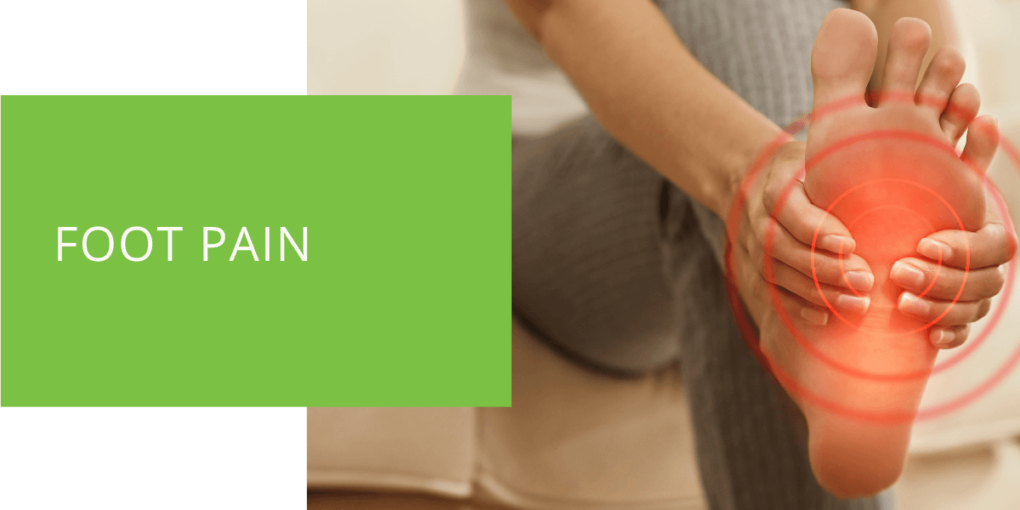Foot Pain Guide
Do you experience foot pain? Foot pain is a common problem that can affect people of all ages. Various conditions, such as plantar fasciitis, bunions, ingrown toenails, Achilles tendinitis, and arthritis, can cause it. Foot pain can be debilitating and affect your daily life, so it's essential to understand the common causes and treatments for foot pain. In this foot pain guide, we'll explore some of the most common causes of foot pain and their treatments.
Common Causes of Foot Pain
Plantar Fasciitis
Plantar fasciitis is a common cause of heel pain, affecting millions worldwide. It occurs when the plantar fascia, a thick band of tissue that runs from the heel to the toes, becomes inflamed. This can cause pain and swelling in the heel and arch of the foot. Some causes of plantar fasciitis include wearing shoes with poor arch support, having flat feet or high arches, being overweight, and overuse injuries. Treatment options for plantar fasciitis include rest, ice, stretching exercises, orthotics, and medication.
Bunions
Bunions are big toe joint deformities that can cause pain and swelling. They occur when the bone or tissue at the base of the big toe moves out of place, causing the toe to bend towards the other toes. Bunions can be caused by wearing tight, narrow shoes, having flat feet, or having arthritis. Treatment options for bunions include wearing properly fitting shoes, using orthotics, taking medication, or surgery.
Ingrown Toenails
Ingrown toenails occur when the corner or edge of a toenail grows into the skin, causing pain and swelling. They can be caused by wearing tight shoes or socks, trimming toenails incorrectly, or having naturally curved toenails. Treatment options for ingrown toenails include soaking the foot in warm water, using antibiotics or medication, or surgery.
Achilles Tendinitis
Achilles tendinitis is a common injury affecting the Achilles tendon, a thick band of tissue connecting the calf muscles to the heel bone. It occurs when the tendon becomes inflamed, causing pain and swelling in the back of the heel. Achilles tendinitis can be caused by overuse injuries, wearing shoes with poor arch support, or having tight calf muscles. Treatment options for Achilles tendinitis include rest, ice, stretching exercises, orthotics, and medication.

When to Seek Treatment
It's essential to seek treatment for foot pain if you experience persistent pain and swelling that lasts longer than a few days. You should also see a podiatrist if you experience redness, irritation, or numbness in your foot or ankle. If you suspect you have a fracture or other serious injury, seek medical attention immediately.
Treatment Options
Orthotics
Orthotics are shoe inserts that can support your foot's arch, reduce heel pressure, or correct foot deformities. They can be made from various materials, including foam, plastic, or metal.
Physical Therapy
Physical therapy can treat foot pain by strengthening the muscles and improving the range of motion. It can also be used to reduce inflammation and relieve pain. Common physical therapy techniques for foot pain include stretching exercises, massage, and ultrasound.
Medication
Several types of medication can be used to treat foot pain, including over-the-counter pain relievers, corticosteroids, and antibiotics. Your podiatrist may prescribe medication to relieve pain and inflammation or to treat an infection.
Surgery
Surgery is usually a last resort for foot pain and is only recommended if other treatment options have failed. Common foot surgeries include bunion removal, Achilles tendon repair, and heel spur removal. Your podiatrist will determine which type of surgery is best for you based on the cause and severity of your foot pain.

Identifying Your Type of Foot Pain
Not all foot pain is the same, and understanding the type of pain, you're experiencing can help you determine the best course of treatment. Here are some common types of foot pain and their characteristics:
- Arch Pain: This type of pain is felt in the foot's arch and is often caused by flat feet, high arches, or overuse injuries.
- Heel Pain: Heel pain is a common complaint caused by several factors, including plantar fasciitis, heel spurs, or Achilles tendinitis.
- Toe Pain: Toe pain can be caused by several conditions, including bunions, corns, and calluses, and can often be treated with proper footwear and orthotics.
- Ball of the Foot Pain: Pain in the ball of the foot can be caused by several conditions, including metatarsalgia, Morton's neuroma, and gout.
- Ankle Pain: Ankle pain can be caused by several conditions, including sprains, fractures, and tarsal tunnel syndrome.
If you are experiencing foot pain, it's important to identify the type of pain you're experiencing to determine the best course of treatment. A podiatrist can help you diagnose the cause of your foot pain and recommend appropriate treatment options.
Diagnostic Tests for Foot Pain
If you're experiencing foot pain, a podiatrist may use diagnostic tests to identify the underlying cause. Here are some common diagnostic tests used to diagnose foot pain:
- X-rays: X-rays can identify fractures, bone spurs, or other structural abnormalities that may be causing foot pain.
- MRI: MRI scans can provide a more detailed view of the soft tissues in the foot, such as tendons and ligaments, and can help diagnose conditions such as plantar fasciitis or tarsal tunnel syndrome.
- CT scans: CT scans are particularly useful for diagnosing complex foot fractures or joint injuries.
- Ultrasound: Ultrasound can be used to diagnose soft tissue injuries, such as Achilles tendinitis or plantar fasciitis.
By understanding the diagnostic tests that may be used to diagnose foot pain, readers can be better prepared for their podiatrist appointment.

Lifestyle Changes to Reduce Foot Pain
In addition to the prevention tips discussed in the article, several lifestyle changes can help reduce foot pain. Here are some additional lifestyle changes that readers can make:
- Lose Weight: Carrying extra weight can put extra pressure on the feet and contribute to foot pain. By losing weight, readers can reduce the strain on their feet and alleviate pain.
- Wear Proper Footwear: Wearing shoes that provide proper arch support and cushioning can help alleviate foot pain. Avoid shoes with a narrow toe box or high heels, as they can exacerbate foot pain.
- Exercise: Low-impact exercises like swimming, cycling, or yoga can help improve foot and ankle strength, reduce inflammation, and alleviate pain.
- Stretching: Regular stretching exercises can help improve flexibility and reduce the risk of injury. Focus on stretching the calves, hamstrings, and feet.
By incorporating these lifestyle changes into their daily routine, readers can reduce their risk of foot pain and alleviate pain if it does occur.
Prevention Tips
There are several things you can do to prevent foot pain, including:
- Wear shoes that fit properly and provide adequate support for your feet.
- Avoid wearing high heels or shoes with a narrow-toe box.
- Practice good foot hygiene, such as washing your feet daily and keeping your toenails trimmed.
- Stretch your feet and legs regularly to maintain flexibility and reduce the risk of injury.
- Maintain a healthy weight to reduce the strain on your feet and ankles.
Conclusion
Foot pain can be frustrating and debilitating, but it can be managed effectively with the right treatment and preventative measures. If you are experiencing foot pain, seek the advice of a podiatrist who can help you determine the cause of your pain and recommend appropriate treatment options. By caring for your feet and ankles, you can ensure they remain healthy and pain-free for years.

